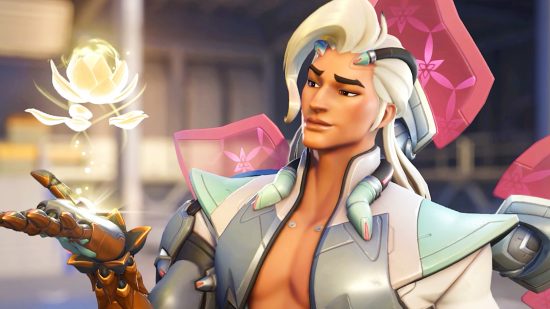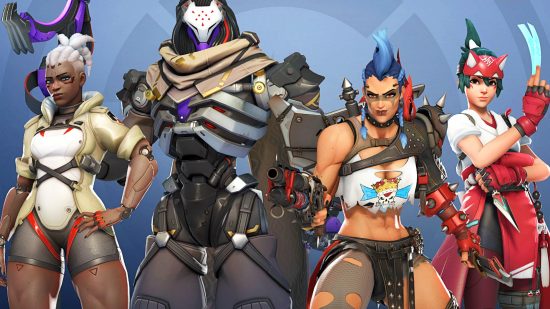As monitor 2 the list continues to grow, and their latest addition is one of their toughest, following a trend of more complex Overwatch 2 characters that Blizzard says Blizzard intends to continue in the future of its multiplayer. After a series of quick changes to newcomer Lifeweaver, Game Director Aaron Keller reflects on the Overwatch 2 team’s modern hero design philosophy and the importance of “high-impact abilities.”
Shortly after the release of Lifeweaver for Overwatch 2, the vast majority of players forced Blizzard to make changes. In particular, his control scheme has been criticized as “clunky”, while concerns have been raised about his relatively slow healing rate and abilities, which include the ability to pull teammates towards you, with or without their consent. , and a “parting gift”. ” which is thrown to death, which will heal whoever picks it up, friend or foe.
Lifeweaver changes should come with the next patch. Parting Gift is no longer used, and Lifeweaver’s control scheme has been reworked to turn his damaging barrage of thorns into a secondary fire instead of requiring weapon swaps. But the Thai healer reflects a larger trend in Overwatch 2; they are increasingly complex heroes with a higher learning curve.
Before Lifeweaver came Ramattra, with two different forms, specializing in melee and medium combat, as well as unique primary and secondary attacks tied to each state. Next up is Junker Queen’s knockback, which may seem simple until you realize that playing a brutal tank properly requires maintaining multiple independent bleeds on your enemies for her passive lifesteal to work well.
Junker Queen’s Overwatch 2 launch partner Kiriko is, on the face of it, less complex. However, his kit, while simple, is certainly suited for a high-level playstyle. His kunai rewards accurate headshots, and his Purifying Suzu is an incredibly powerful ability that, if used at the wrong time, only grants a short period of immunity to those it hits. Meanwhile, star DPS Sojourn is by far the easiest of the bunch, though her railgun has also proven much more problematic at high ranges due to its devastating critical hits.
This difficulty left newcomers feeling overwhelmed or conversely struggling to find their balance as players adjusted to their abilities, Blizzard’s Keller admits. “For the new hero balance, we’re not really changing our philosophy, but we think Lifeweaver and Ramattra landed a little softer than we’d like,” she says. “We understand that the win rate of heroes will increase once they launch, but we also want the same heroes to engage players from day one.”
Speaking specifically about Lifeweaver’s design, Keller notes that some of his abilities are “unprecedented in Overwatch,” commenting that this constant push to introduce abilities that don’t overlap with existing abilities too much results in a team that “can be a bit overwhelming.” ”

Keller acknowledges how loaded Lifeweaver is, calling his kit “slightly different from Overwatch’s hero design.” He continues: “In the past, we could distribute these abilities to more than one hero; that’s how Genji and Hanzo were created.” However, he explains that the team enjoys the inherent learning curve and nuanced gameplay that comes with more complex character skill sets.
“There are two sides to this coin,” concludes Keller, “and the players have created a lot of buzz around their kit. While we don’t make every Overwatch hero equally challenging, we do believe there is room for more heroes like Lifeweaver in the future.”
Make sure you’re on the winning Overwatch 2 Season 4 team by checking out our list of the best Overwatch 2 heroes to lead the metagame. Explore the menus to select the best Overwatch 2 settings, and you’ll be laughing at the masters.
Source : PC Gamesn

